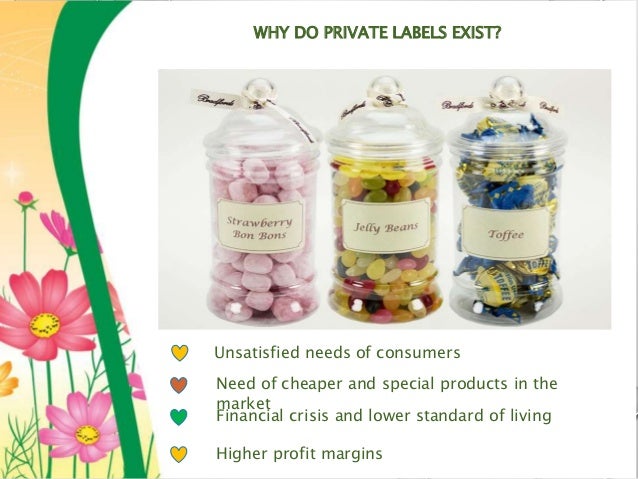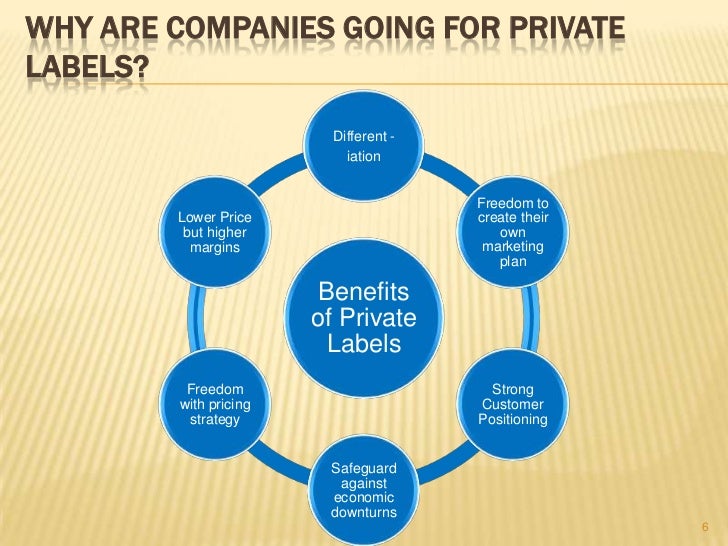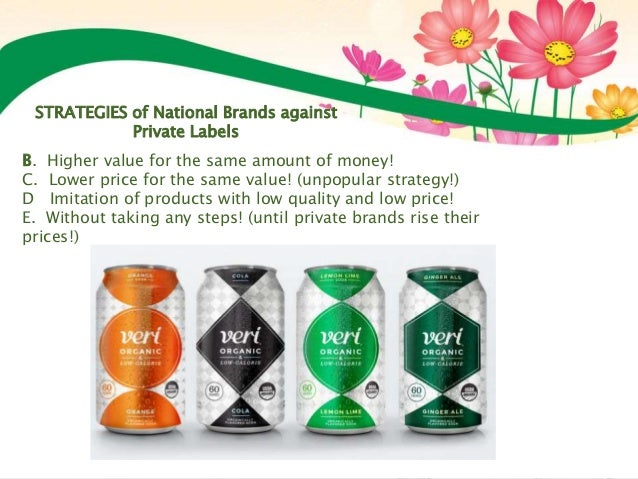44 private labels vs national brands pdf
PDF The Relationship Between National Brand and Private Label Food ... - USDA Over the past two decades, private label food products have grown steadily in sales and often directly compete for market share with national brands. This competition lowers prices and increases product choices for consumers. This report analyzes the relationship between private label and national brand product prices and in-store promotions ... U.S. private label market - statistics & facts | Statista In 2021, the retail market share of private label brands in the United States was 17.7 percent, down from 19.5 percent in the previous year. In that year, retail sales of consumer packaged goods...
PDF Why Private Brands should form part of every Retailer's ... - dunnhumby For Customers, Private Brands can: • Offer good value for money, delivering National Brand quality at around 20% to 30% less. These savings are driven primarily by reduced marketing and administration costs, which can be passed directly to the Customer. • Meet a range of changing needs, boosting choice and filling potential gaps in the market.

Private labels vs national brands pdf
PDF PLMA's 2022 Private Label Report National brands gained 2.7% in dollar sales, or $926.9bn, bringing overall industry revenue to $1.13tn, up 2.4% vs the previous year. In terms of market penetration, private brand dollar share for 2021 was 17.7%; unit share came in at 19.6%. In units, store brands were off 4.5% and national brands Turning private labels into powerhouse brands - McKinsey & Company The fact that private labels are frequently cheaper than national brands has helped, too, as financially strained consumers tighten their purse strings. These two advantages—high availability and low price—have made private-label products considerably more appealing to consumers during the COVID-19 pandemic. Video Insights to Impact PDF Private Label & National Brands - The Food Institute Department level share trends show an ongoing volley between national brands and private label. Private label share is generally growing in frozen foods, while national brands are strong in health and beauty. Exhibit 3 Source: 1IGD Retail
Private labels vs national brands pdf. Walmart's Private-Label Brands Are Its New Edge The catch: It takes significant resources to cultivate a private-brand portfolio like Walmart's. That's not to suggest others aren't doing it. Bed Bath & Beyond ( BBBY -9.29%) just unveiled a new ... PDF Private labels - A threat for manufacturer brands consumers prefer certain national brands and private label brands for many product categories (Singer, 2010) [6]. 2. Private Labels A private label brand (also called a reseller, store, house, or distributor brand) is a brand that retailers and wholesalers develop (Ailawadi and Harlam, 2004) [1]. There are many retailers (PDF) Private Labels and National Brands: A Comparison Within Brand ... The paper reports the results of three experimental studies which analyze the impact of category fit and brand knowledge on brand extension of private label vs. national brands. The results seem ... PDF Private label positioning: Quality versus feature differentiation from ... in 77 of 250 supermarket product categories, private labels in the u.s. collectively have higher unit market shares than their strongest nationally branded competitor, while they are sec- ond or third in 100 of those categories (quelch and harding 1996).amongotherretailerbenefits,privatelabelsadddiver- sity to the product line in a retail category …
Private labels versus national brands: The effects of branding on ... This research tests consumer perceptions of private labels and national brands. • When consumers are aware of the brand, they prefer national brands. • When consumers are blind to the brand, they prefer private labels. PDF Factors that influence consumer purchasing decisions of Private Label ... 1.2. Private Label Brand The idea of branding exposes consumers in a diversified choices and helps companies to provide one product in a branch out option to fulfill individual needs with different consumption behavior. Companies that are not lucky to sell mass products are forced to turn their face in to private labels, The evolution of private labels at retail 1. Eliminate the use of the term "private label.". It is a mostly irrelevant term increasingly not used or applied by consumers. In place of stating that "Kirkland" is Costco's private label brand, consumers are more likely to state that "Kirkland" is very good brand that one can only seem to find at Costco. 2. PDF Private Label - Retailers' Competitive Strategy - Global Journals retailers' private label strategy is identified as suitable under the conditions of growing market competition. Since the 1970s private labels have become an effective tool for increasing the profitability of business. The pioneer in the sphere of creation of a large commercial private label network in 1976 is the French retail company Carrefour.
Private label brands - Economics Help 18 December 2014 by Tejvan Pettinger. Private label brands (or own brand labels) are products sold by a retailer with its own packing, but manufactured by a third party. For example, Tesco sell ordinary branded items, such as Heinz baked beans, but also sell their own 'Tesco Value' baked beans. Tesco will license a manufacturer to produce ... Private Label Soars During Pandemic, Battling Brands - Forbes Trader Joe's is continuing to tap thousands of private label products, and in less than a year, Target built a $1 billion food brand - that it is continuing to grow. And let's not forget about ... PDF private brands 2021 - PR Newswire The number of new product introductions has fallen during the pandemic, with Private Brands introducing nearly -34% fewer products in 2020 and -54% fewer in 2021. But name brands dropped... Private label products vs. brands Canada 2020 | Statista This statistic shows the attitudes towards private label and name brands among consumers in Canada as of July 2020. According to a survey carried out by ProdegeMR, some 39 percent of the responding...
Private labels outpacing national brands | Retail Dive Dollar sales of private labels rose 41% over the same period, compared to 7.4% for national brands. Market share has adjusted accordingly: Private labels' unit market share reached 23.2% in 2018,...
PDF Private Label & National Brands Private label/national brand dollar share trends have been flat during the past few years, while national brand unit share has ticked upward. Source: IRI Consumer Network™; 52 weeks ending 9/7/2014 versus same period prior years 83.8% 83.6% 83.5% 83.4% 16.2% 16.6% 16.5% 16.6% 2011 2012 2013 2014 Private Label National Brand
Consumers' Intention to Buy Private Label Brands Revisited In many countries retailers use private label brands (i.e., brands sold under retailers' own labels) to differentiate assortment and price. As private label brands enjoy growing popularity and are increasing in both their quantity and quality, they continue to attract the attention of scholars and practitioners.
PDF Chapter 31 Branding, Packaging, and Labeling - Erie City School District Types of Brands National brands X are owned and initiated by national manufacturers or by companies that provide services, such as: •Hershey •Whirlpool •Ford national brands Brands that are owned and initiated by national manufacturers or service companies; also known as producer brands. Marketing Essentials Chapter 31, Section 31.1
PDF Point of View - Iri between Private Label and National Brands remains significant across retail channels. EXHIBIT 1 Private Label offerings are, on average, 44% cheaper in Packaged Grocery, 58% cheaper in P&C, 51% cheaper in Liquor and 16% cheaper in OTC Healthcare. While the price gap reflects Australian Private Label brands being underexposed (as well
PDF THE RISE AND RISE AGAIN OF PRIVATE LABEL - Nielsen Comparatively, private-label still has much room for growth, especially in North America, where penetration is still relatively low. The private-label market in Latin America is also small in terms of value share. The challenging economic situation in Latin America (2), however, may help private-label become a good alternative for Latinos looking
PDF Private Label & National Brands - The Food Institute National brands gained share across five of the 10 largest private label categories during the past few years. PRIVATE LABEL VOLUME SHARE growth have met with success & POINT CHANGE 2013 VS. 2010 TOP 10 PRIVATE LABEL CATEGORIES* MULTI-OUTLET + CONVENIENCE
Should national brand manufacturers produce private labels? This paper examines this question through the construction of a model, focusing especially on the effects of producing private labels on manufacturers' profits when their provision may affect both the consumers' perception of the quality of the private label and the national brand manufacturer's costs. Findings
Brand Names Just Don't Mean as Much Anymore - TIME.com A new "Private Label" report from the Integer Group offers some insights. Here are some highlights from the study: Women are especially likely to check out store brands. Most shoppers scope out both private-label and name-brand products before making purchases: 77% of all consumers report doing so. But women are far more likely to compare ...
PDF An Overview of Private Label in Australia - coriolisresearch.com It is positioned in price above Woolworths' Home Brand generic range and below the national brands, although, last week, some of the promoted national brand specials were cheaper than the Woolworths "control brand." Foodweek, February 2001 -"It's not a premium private label, but rather a 'control brand.'
What Are the Differences between Private Brands and National Brands ... It is because of this quality difference that many people prefer private brands over national brands. Private brands also have far lower operational costs than national brands and do not conduct expensive marketing campaigns to promote their products. Most retailers opt to provide goods belonging to both private and national brands.
PDF Private Label & National Brands - The Food Institute Department level share trends show an ongoing volley between national brands and private label. Private label share is generally growing in frozen foods, while national brands are strong in health and beauty. Exhibit 3 Source: 1IGD Retail
Turning private labels into powerhouse brands - McKinsey & Company The fact that private labels are frequently cheaper than national brands has helped, too, as financially strained consumers tighten their purse strings. These two advantages—high availability and low price—have made private-label products considerably more appealing to consumers during the COVID-19 pandemic. Video Insights to Impact
PDF PLMA's 2022 Private Label Report National brands gained 2.7% in dollar sales, or $926.9bn, bringing overall industry revenue to $1.13tn, up 2.4% vs the previous year. In terms of market penetration, private brand dollar share for 2021 was 17.7%; unit share came in at 19.6%. In units, store brands were off 4.5% and national brands














Post a Comment for "44 private labels vs national brands pdf"